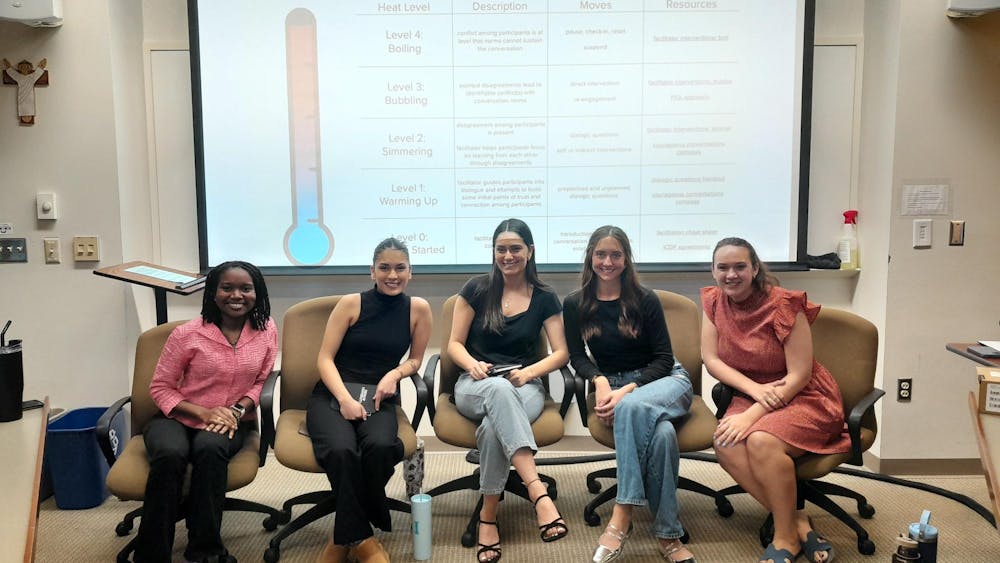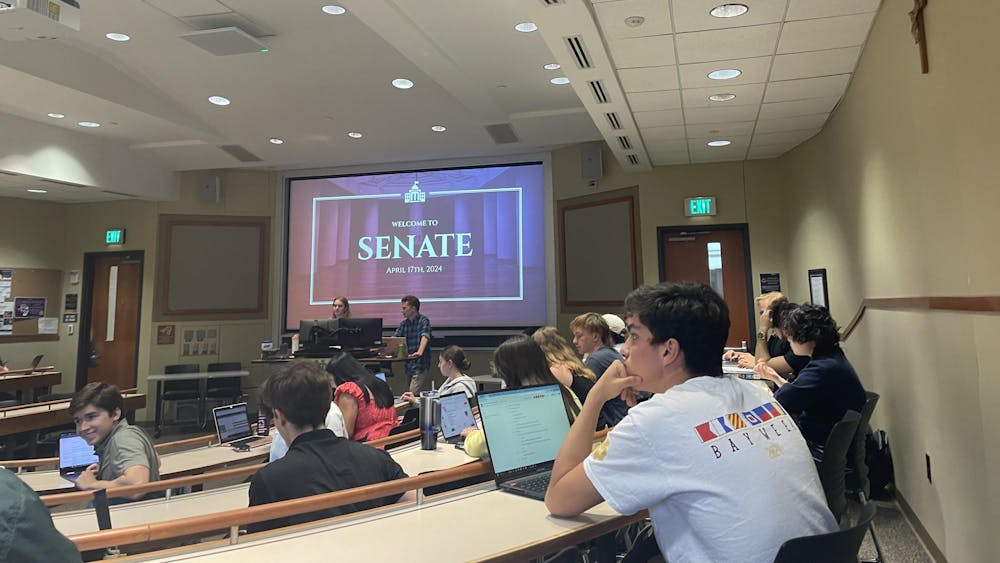Notre Dame Investment Club members pitched mountain resort company Vail Resorts during the club’s meeting Feb. 22. Sophomore finance majors Michael Gates, Casey Ott and Ryan Spezzacatena made the pitch for the owner and operator of mountain resorts, luxury hotels and condominiums.
Vail Resorts is dedicated to delivering world-class experiences to its guests across its three segments of mountain, lodging and real estate.
“The crux of our pitch is within the ‘Epic Pass’ that Vail has unveiled that allows for customizable season passes that access more than 80 resorts in four continents,” Gates said.
It has not been a consistently epic run for Vail’s common stock over the past four years. After a 48% drop during travel restrictions due to COVID-19, Vail managed to surpass previous 2018 highs on a run that peaked in late 2021. Now resting about 30% below its all-time high, Vail presents a key opportunity for new investors to give the ski resort operator a chance, Gates said.
“The Epic Pass provides unlimited access to Vail, [Breckenridge], Park City and other resorts with a personalized touch and flexible offering for all experience levels,” Ott said.
This unlimited access may come at a cost to the consumer experience that draws its target market to its epic pass and partner resorts. Staffing issues and long lines were the original catalyst for Vail’s precipitous drop from its all-time high this year. Vail, however, is taking measures to combat the current lackluster consumer experience, Spezzacatena said.
“Vail is combating its staffing shortages with the largest single year investment ever of $320 million that is designed to reduce wait times and increase skiable terrain,” Spezzacatena said.
Revenue from Epic Pass sales rose 21% in the past year. The company-wide goal is set at striving for a 75% share of lift revenue resulting from Epic Pass sales, Ott said. Vail’s value proposition continues to revolve around its large “moat,” or ability to fend off competition and maintain its competitive advantage. This wide moat comes broadly from a limited number of skiable mountains in areas tourists wish to travel, limiting Vail’s potential competitors to other firms that have already acquired wide swaths of land and are recognizable in the skiing industry.
Gates put the lack of growth in perspective when he described the recent history of the ski resort industry.
“There have been virtually no new destination ski resorts for over 40 years,” Gates said.
This consolidation allows Vail to continue to acquire smaller operators and then invest heavily into new locations to turn them profitable. Additionally, with 50% of customers under 35, Vail does not appear to be held back by an aging broader population, as millennials and their families continue to spend their winters at its resorts, Spezzacatena said.
The Investment Club ultimately decided on a buy of Vail Resorts due largely in part to their accretive acquisitions, price-insensitive customers and potential for European ski market growth.













